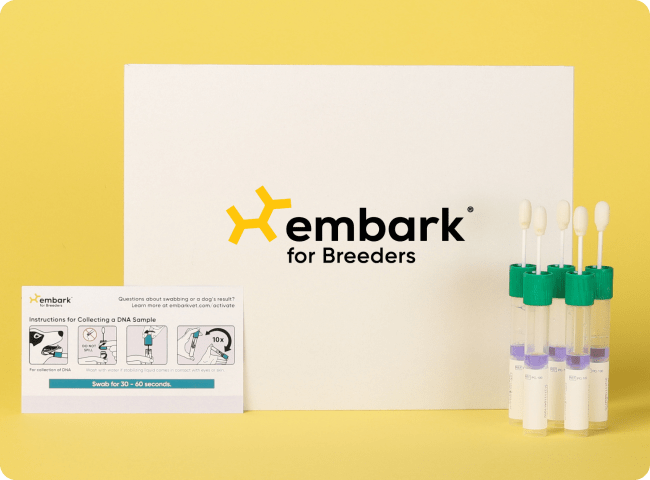Canine Leukocyte Adhesion Deficiency Type III, CLAD III
CLAD III is a rare disorder of white blood cells and platelets that causes increased susceptibility to infections and bleeding tendencies.This mutation causes the normal activation of white blood cells and platelets in response to an injury or infection to fail.
-
Signs and symptoms
Affected dogs may have recurrent, severe skin infections (pyoderma), limping (lameness), and/or swollen, bleeding gums (gingivitis).
This disease is typically diagnosed in puppies or young adults when they experience chronic infections and/or bleeding following a spay or neuter. -
Diagnosis
Genetic or laboratory tests are performed to diagnose this condition.
-
Treatment
Currently, treatment for CLAD III focuses on symptomatic management. Judicious, chronic antibiotic use is typically required. Blood products will need to be given following a trauma or surgery.
-
What to do if your dog is at risk
Actions
- Prevention is ideal, but affected dogs often have a shortened life span despite their owners’ best efforts. Be aware of the location of the nearest emergency veterinary hospital.
- Regular bathing with antiseptic shampoos, routine dental care, minimizing the risk of trauma and informing your veterinarian so that surgeries can be carefully planned are the best ways to prevent a poor outcome.
- Be aware of the location of the nearest emergency veterinary hospital in case of an accident.
-
Genetic Information
This variant was first identified in German Shepherds.
CLAD III is inherited in an autosomal recessive manner, meaning that affected dogs must have two copies of the mutation to show clinical signs.
Gene names:
FERMT3 ‐ chr
Inheritance type:
recessive
Citations:
-
Breeds affected
This health condition affects the following breeds
Learn about your dog’s unique genetic health
Dog owners
Breed identification, health and trait insights, personalized care recommendations, and the world’s first canine relative finder—all in one leading dog DNA test.
Learn about the report for dog ownersShop the test
Breeding programs
Embark’s test for breeding programs is one comprehensive DNA test designed with your needs in mind.
Learn about the report for breedersShop the test






